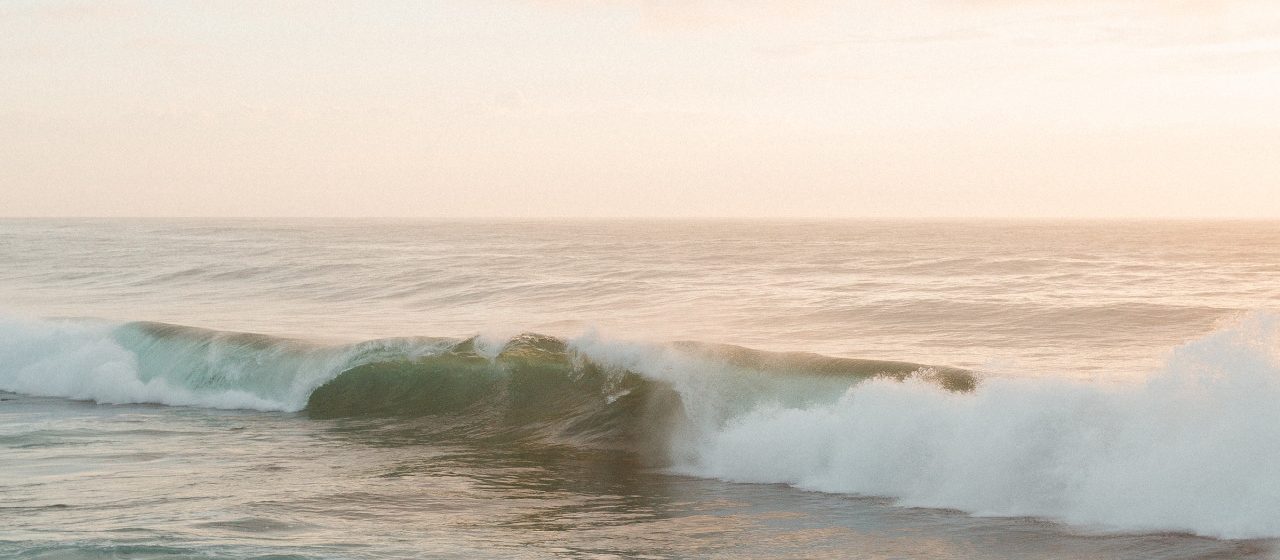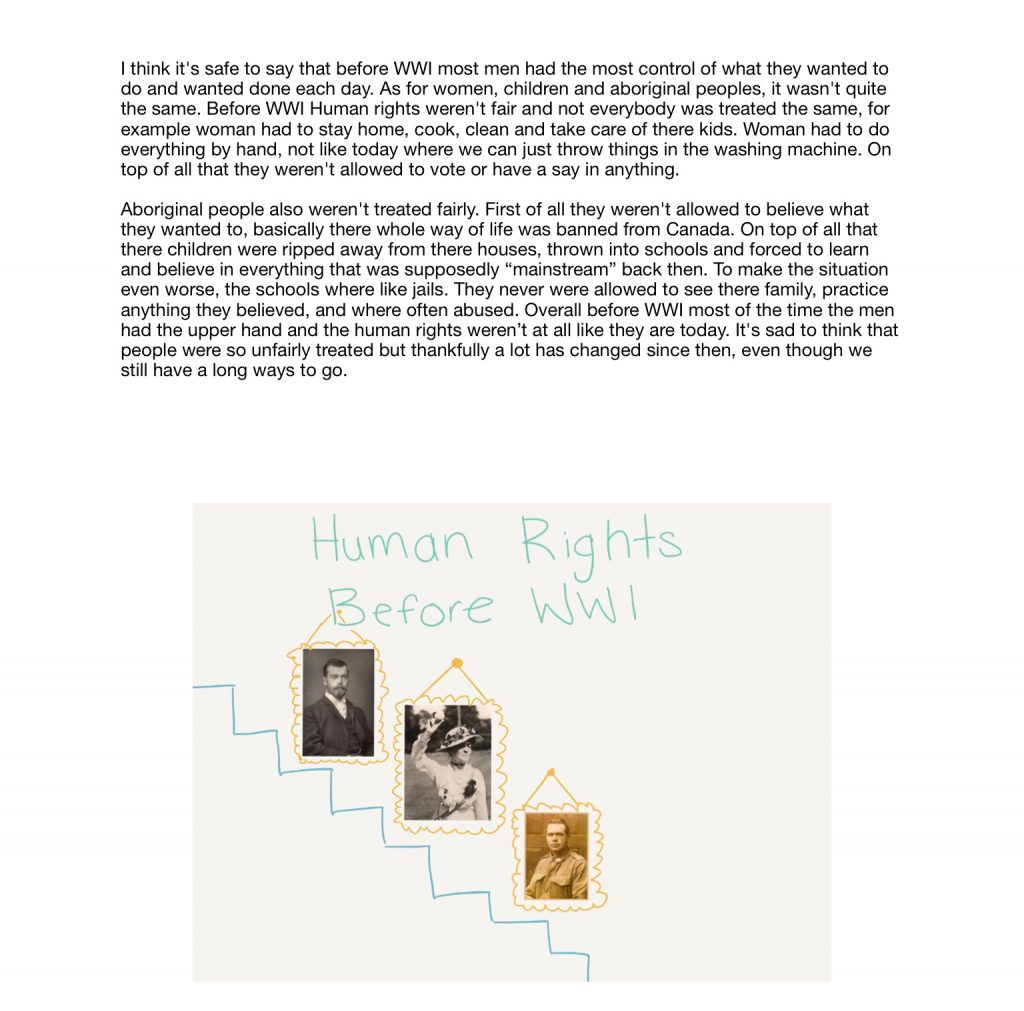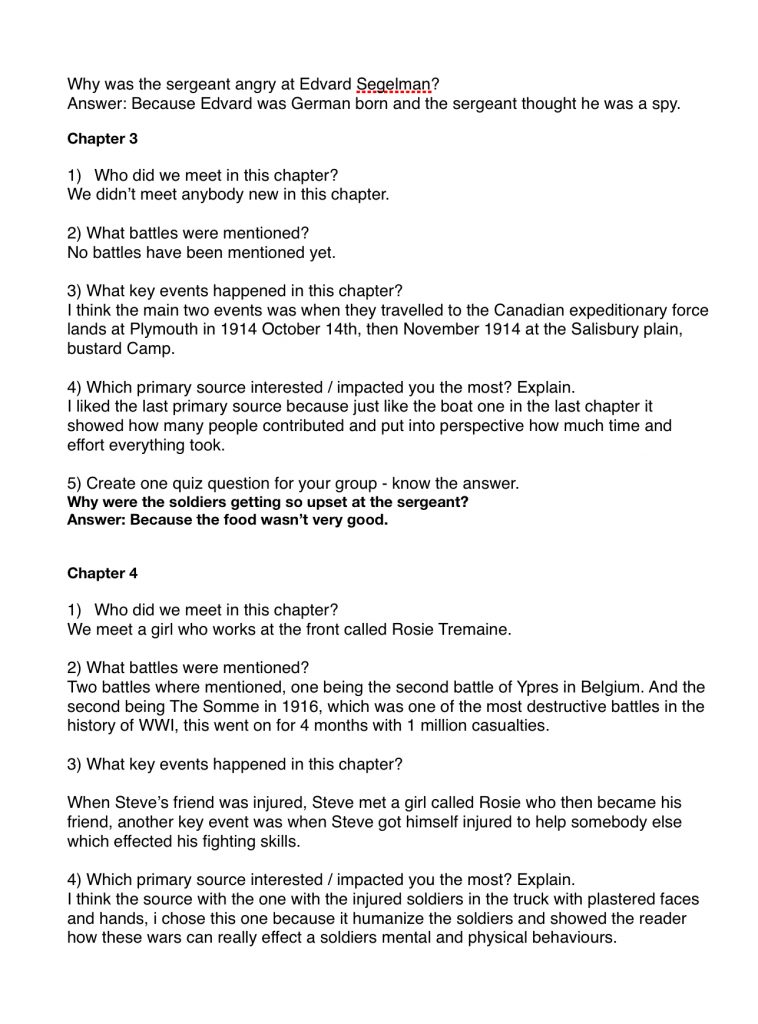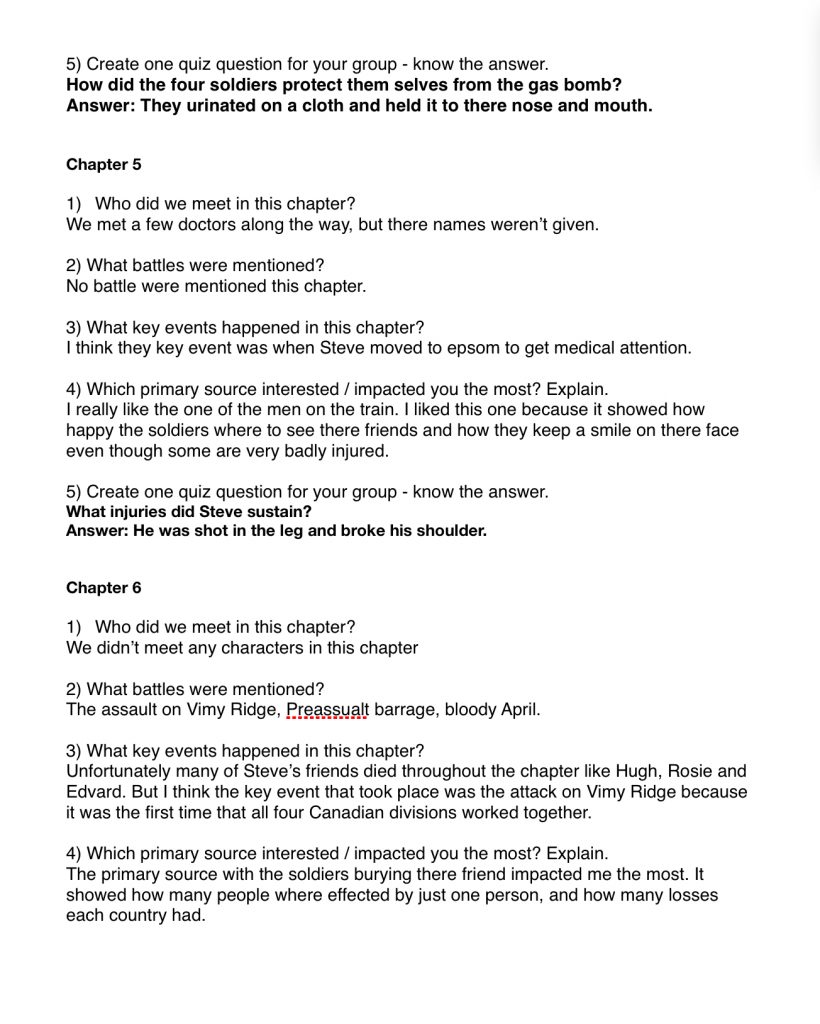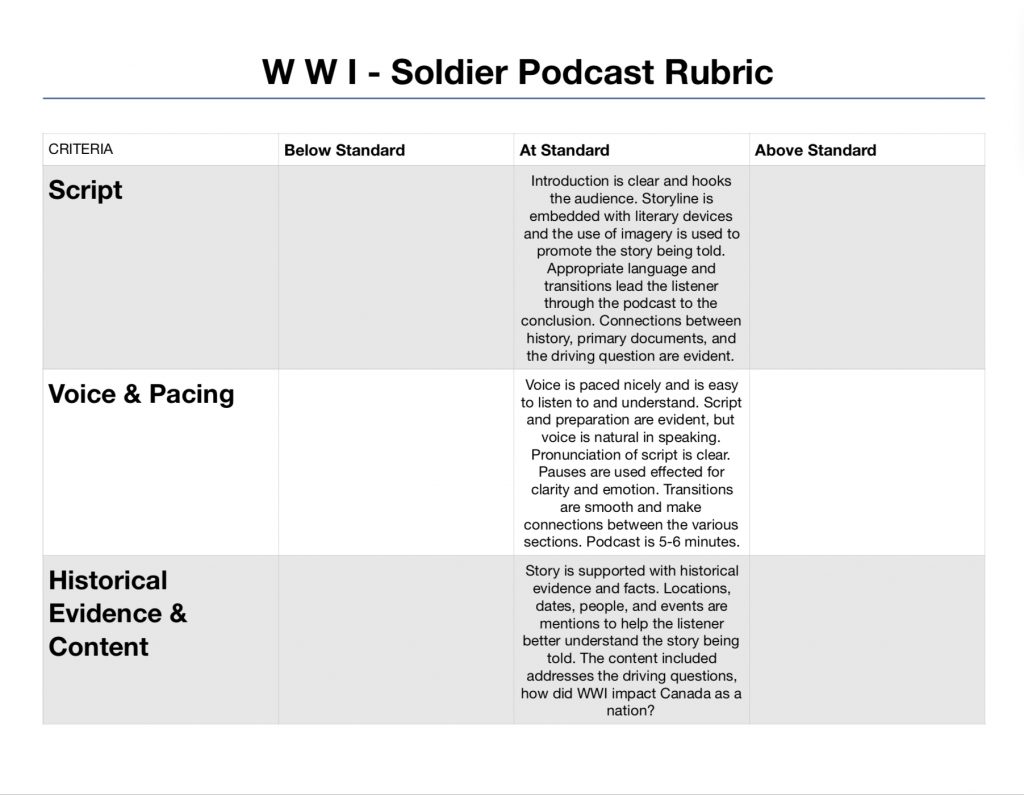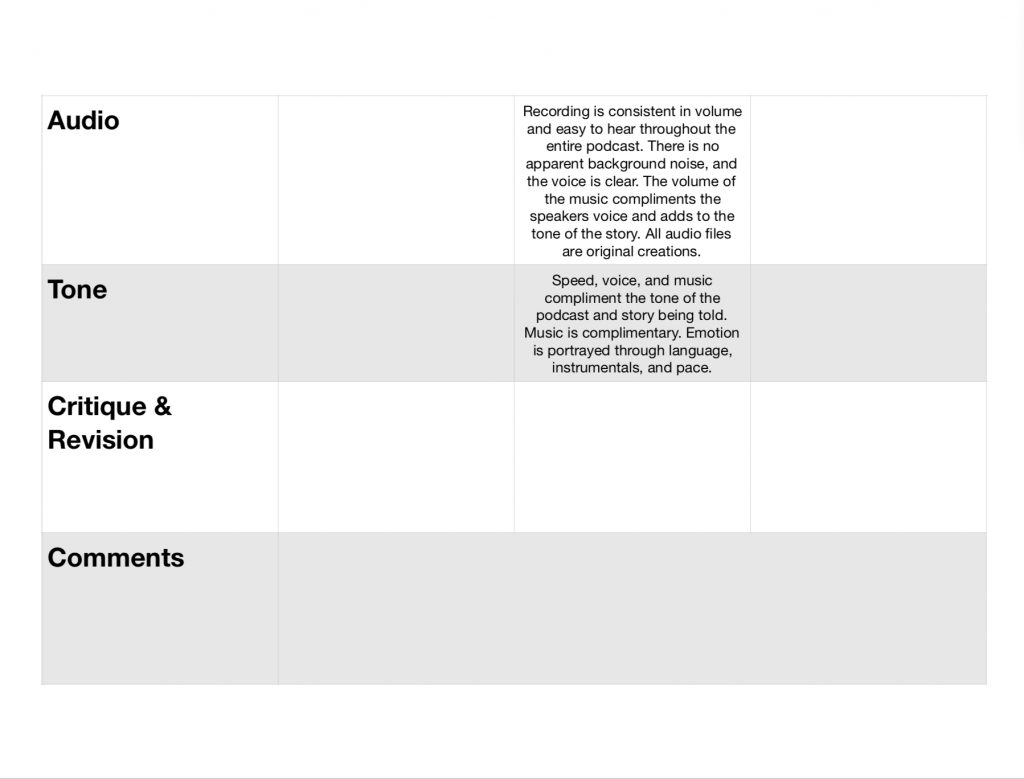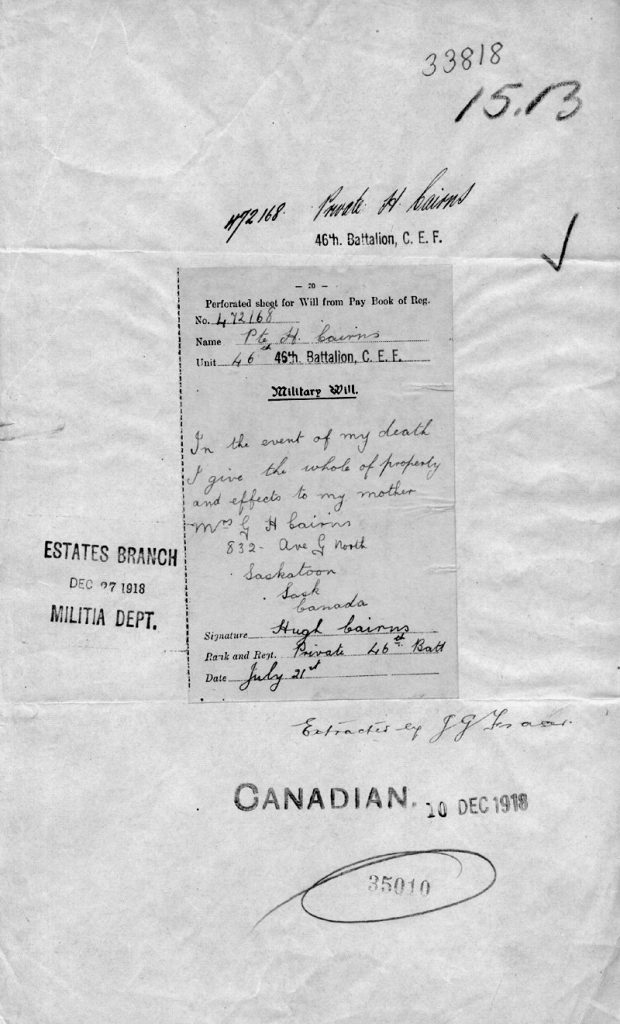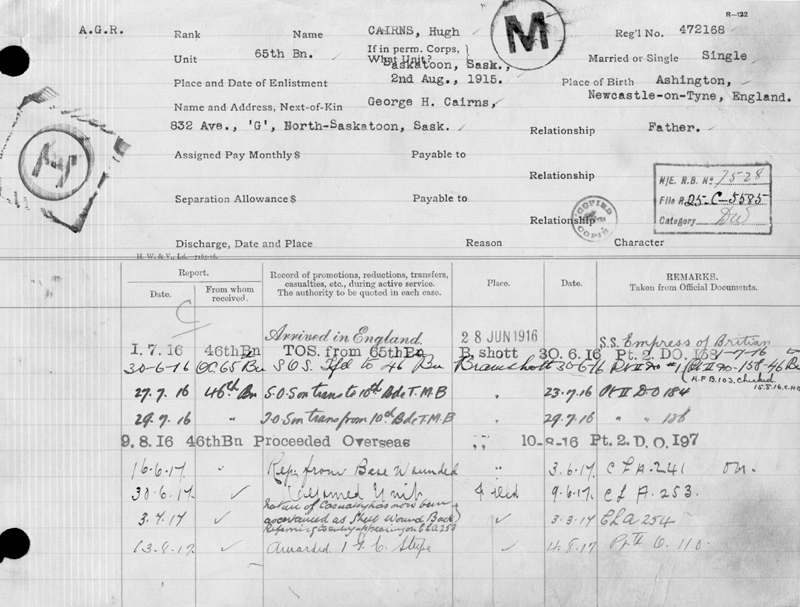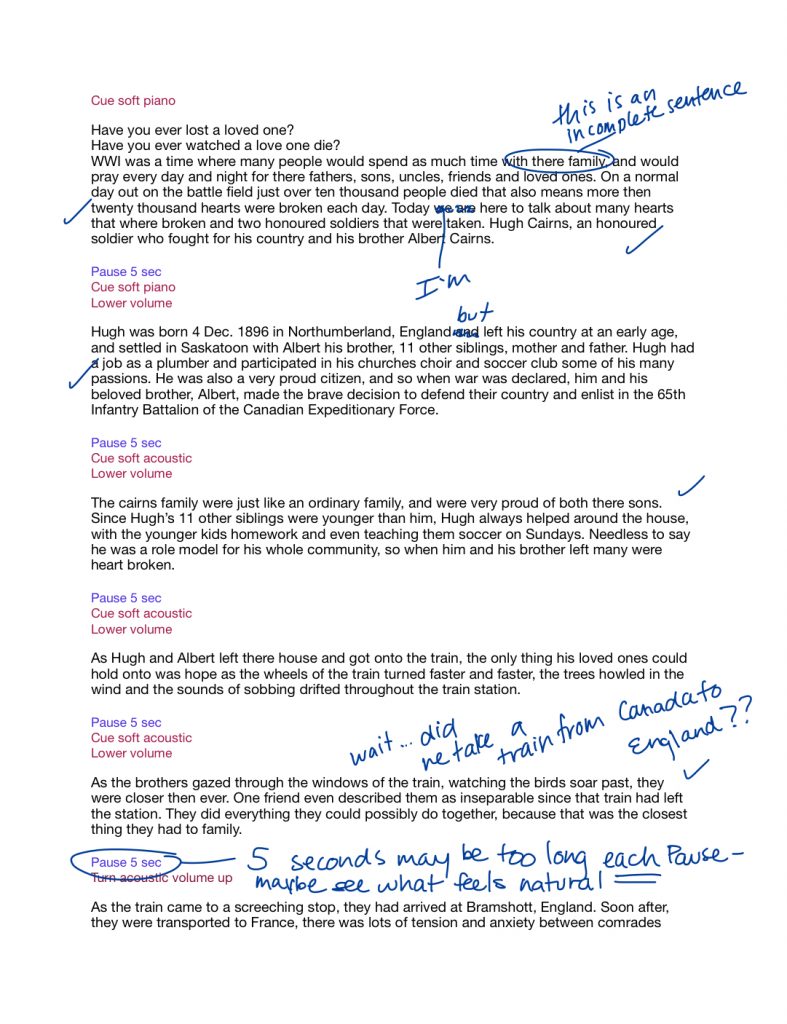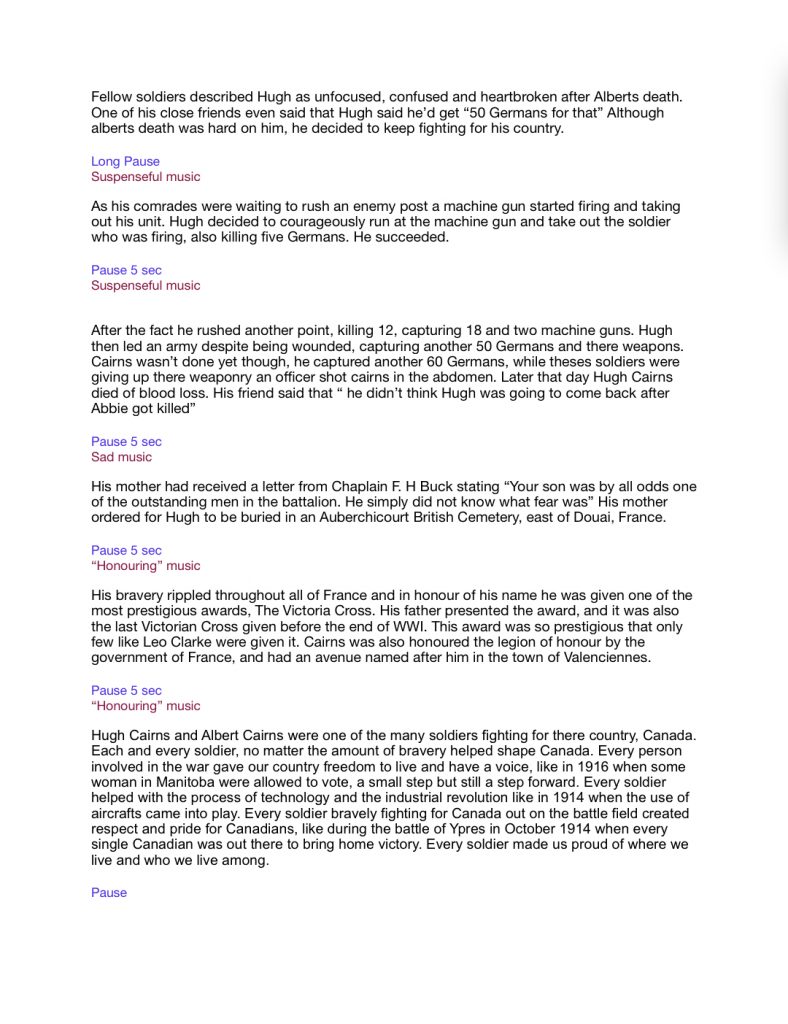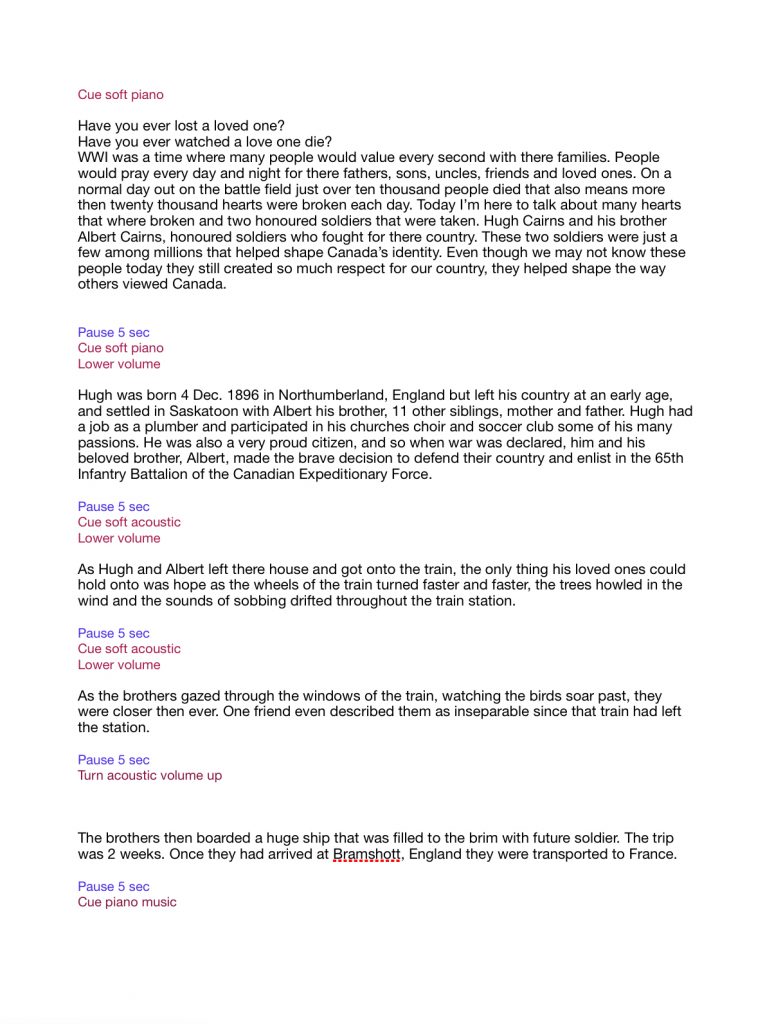Posted on January 22, 2018
MPOLS
It’s that time of year again! MPOLS, or SLCS are starting so it’s time to reflect! This year has been filled with lots of projects, but among them are a few that have room for growth!
Just before the break we started and finished our first essay. In the end I was pretty happy with my results and ideas, but the one thing I have always struggled with is my grammar. A major part that can progress me as a learner in my writing is revision. I think that if I ask my peers, teachers or parents after every revision to read over my writing It can motivate me to do better each time. Every time I reflect on some sort of writing assignment I always say I would like to improve my grammar, hopefully this time if I focus on my grammar and spelling these next few months I can progress as a learner before the end of the year!
The next thing that I would love to improve by the end of this year, focuses more on math. Math has always taken me a little but longer to understand, I think by deepening my knowledge of whatever concept we are learning can immensely improve this struggle. During the ideal angles project, I realized that I really needed to understand the concept before I actually did the project. This got me thinking about how in the future I need to improve this so I can actually take math concepts and use them in the real world. I think the only way I can progress as a learner by the end of the year is to ask more questions about each concept. I also feel like I should try learning these concepts more visually rather then listening to explanations, so maybe finding some videos that visually represent concepts can improve my math skills by the end of the year.
Moving on to science, a little while a ago we did a podcast project on the likeliness of twin relatives child looking the same. Along with this we did quite a few labs, this is something I would really like to improve, my thoroughness in my lab work. I think by video taping each lab, writing what I notice and reflecting each time, can help me progress as a learner by the end of the year.
Finally, Maker block! Since DI is starting again there are a few things I would love to work on. Leadership is one of the main aspects. I definitely feel like leadership is made up of many roles, one thing I would love to work on is responsibility. What I mean by this is when somebody can’t do something or doesn’t know how to, show them instead of doing it for them. I think the best way to improve on this is to reflect afterwards. Even asking group members can help progress my learning by the end of the year.
As many improvements as I would like to make this year, there are also many projects I am very proud of. I feel like my work ethic has also improved immensely by showing resilience in each revision I make throughout the projects we do.
One specific project I am very proud of and I thought showed high quality work was the Robson street video. I was very proud of this project for a few reasons. The first being, it showed the group’s personality and individuality through the whole video. The second being, it was very clear and concise, something I struggle to find most of the time. Throughout each project we do lots of revisions. I think the project I improved from the most throughout the revisions was my soldier podcast, click here to read about it.
The last project I thought showed teamwork and responsibility was the Vancouver project. I think it showed teamwork because each group member did equal amounts of work and tried their best to complete this project, even though if didn’t turn out in the end. It also showed responsibility, because throughout the podcast we had to contact an interviewee. We had to set up a date and time to go speak with her and had to follow through on the information she was giving us, this showed lots of responsibility. To get a more thorough understanding of the podcast, click here.
Throughout the next few months I am going to take into consideration every single thing I just talked about. I’ll use the skills I already have to progress as a learner, so that by the end of the year I’ll have better grammar, understand math concepts better, be more thorough, and a better leader.
Posted on January 12, 2018
Everybody Has a Story to Tell
Throughout the past few weeks, we have been learning about the importance of listening. Through this, we discovered a website called Story Corps. Story Corps is all about telling people’s stories, and that everybody has a story to tell. We did lots of mini assignments while navigating our way through this website like finding the hidden meanings behind stories and discovering patterns throughout them. As you may have already guessed we had to do a mini project along with this. The project was made up of three podcasts, one from a school partner, another from a relative and finally one from a stranger. Throughout this podcast, we were also paired up with a partner from an older grade. This partner would also tell their story for the first podcast.
The first step to finding a good story was the questions. The questions could range anywhere from life lessons to career choices. During classes, we practiced asking questions and answering them. The hard part was mostly the follow-up questions, they were the ones that came after the storytelling. We had to ask questions like “how did you feel” and “what was that like”, this would add an open-ended conversation that could lead anywhere. This was the direction we wanted to go, we needed more open-ended conversations to spark a story in somebody. These conversations could also be sparked by “what” questions, and long pauses after comments. We learned a lot of this through a video that also talked about dealing with difficult situations in interviews like if there is a sad moment. For example when somebody talks about a difficult time in their life you are supposed to look neutral and not concerned or sad. You can obviously say things like “I’m sorry” but you can’t act like it’s a crazy situation otherwise the speaker won’t want to talk any more about their story. Once we practiced a few scenarios and wrote up a list of around 20 questions we were ready to interview people!
 So for our first podcast, we had to interview our partner. When the interview started we began talking about her ACL surgery and experience. Throughout the podcast, we jumped from the process of the surgery to recovery and how she handled not doing sports. In the end, she wrapped everything up with talking about the lessons she learned through this experience.
So for our first podcast, we had to interview our partner. When the interview started we began talking about her ACL surgery and experience. Throughout the podcast, we jumped from the process of the surgery to recovery and how she handled not doing sports. In the end, she wrapped everything up with talking about the lessons she learned through this experience.
Once the podcast was finished we started to edit our audio. We wanted the podcasts to resemble the story corps one, so we started to look for patterns. We found that all the podcasts began with a small musical interlude and introduction of speakers, then the music faded away when the story began, and at the end was a small thank you to the speakers and a little more music. We also had to decide whether we wanted to edit out our voice questioning the interviewee or wanted to keep them in. In the end, I edited out my voice in Ferrite and created the music in Garage Band.
For this next podcast we had to interview our relatives, the relatives could be close or just family friends. I decided to interview my dad. We talked about him moving around, getting his job, and marrying my mom. For this interview, I also wanted to do the same as my first podcast and leave my voice out for most of it. I felt like going this direction because then it would sound more like they were telling their own story without me. I thought that in the end, it sounded pretty good, take a listen!
For our final podcast, it was a little different, we had to interview strangers! We did this at an exhibition night for the younger grades who were showing their projects. The idea was to interview the parents, relatives and, friends that showed up. The second part of this interview was creating an inviting environment. The interviewing room had to have some type of food, good lighting and semi-soundproofed. For our room we decided to make it look homier, we added rugs, chair, lights, plants and a fireplace. For the food, we had some sugar cookies and an assortment of tea. Finally, we needed some type of system to divide the room time. Since we were in groups of 6 and didn’t know who we were interviewing or how long it would take we had to come up with a system. We ended up pinning a time schedule board where everybody would write down when they were going and with whom. In the end, I thought everything turned out pretty nice, here’s a little time-lapse of us setting it up!
My interviews turned out pretty well, I was a little worried though because I only managed to get two interviews. The interviews did turn into something in the end though and I got some good stories. Like all the podcasts I used Ferrite to edit and Garage Band to make the music. Here’s my first draft!
So since this was the last podcast we were going to do we wanted to make it perfect. Our partners were told to listen to the podcast and give any critique they felt was necessary. Here’s some critique I got! With that, I created an even better version. Although this draft turned out pretty well in, the end, I had a few bumps in the road. Once I finished editing my podcast I was cleaning up my recordings and deleting the ones I didn’t need. I stupidly deleted my ORIGINAL INTERVIEW, I was calm at first until I realized that it had deleted all my other clips in draft one and two along with the interview! I had a mini panic attack, but once I calmed down I emailed the apps helpline. They didn’t end up responding, so I decided to improvise. I grabbed my first draft from Showbie (an app where we hand everything in). But of course, this didn’t have nearly enough audio I needed, because since most of my critique was based on hearing more of my voice during the interview which I edited out from draft 1. I decided I was just going to have to re-record most of my talking clips (the ones where I ask questions). But of course, I had to make sure the volume and tone were the same as the interview as well otherwise it would have sounded obvious that I re-recorded them. To do this I played with the volume in ferrite as well as the pan volume (pan adjusts the tone). In the end, it did sound a little off but considering what I had to do to make it sound like that I was pretty proud! Here’s how it turned out!
With that, I created an even better version. Although this draft turned out pretty well in, the end, I had a few bumps in the road. Once I finished editing my podcast I was cleaning up my recordings and deleting the ones I didn’t need. I stupidly deleted my ORIGINAL INTERVIEW, I was calm at first until I realized that it had deleted all my other clips in draft one and two along with the interview! I had a mini panic attack, but once I calmed down I emailed the apps helpline. They didn’t end up responding, so I decided to improvise. I grabbed my first draft from Showbie (an app where we hand everything in). But of course, this didn’t have nearly enough audio I needed, because since most of my critique was based on hearing more of my voice during the interview which I edited out from draft 1. I decided I was just going to have to re-record most of my talking clips (the ones where I ask questions). But of course, I had to make sure the volume and tone were the same as the interview as well otherwise it would have sounded obvious that I re-recorded them. To do this I played with the volume in ferrite as well as the pan volume (pan adjusts the tone). In the end, it did sound a little off but considering what I had to do to make it sound like that I was pretty proud! Here’s how it turned out!
For my final revision, all I had to do was turn up the volume on just the interviewee’s voice so everything was clearer. I think this podcast can always be better but for now, I’m happy with the outcome!
Overall I learned a lot about not only creating and finding stories but how to listen and engage with other peoples stories. I also improved many everyday skills in various apps. This project was very interesting because along with a podcast we also got to listen to other peoples stories and get to know them better. Overall I would love to do something like this again!
Posted on January 12, 2018
The Bayesian Probability
We just started this unit in humanities all about disruption. Specifically disruption of technology. We where then introduced a new question, How has technology acted as a disruption with its creation throughout history? We started talking about the different types of disruption whether they are negative or positive. A few positive examples where like “using my phone everyday to stay connected with people” but there were some negative like “the information and pictures on my phone may not be secure”. Along with this we read a book called Little Brother, that would deepen our understanding of technology.
Throughout Little Brother the word Bayesian Probability popped up a lot. I started to research this term and found some very interesting information. The Bayesian Probability was originally discovered by Thompson Bayes a mathematician in the 18th century. In Little brother they talked about how nobody really knew him or what he did, until people actually discovered his invention was very useful.
Thompson Bayes
The Bayesian Probability would basically tell you how much you could trust something. Say a doctor was testing a baby for Moebius syndrome (facial paralysis in fetus’s). Only 1 in 50,000 births to America are diagnosed with this syndrome each year. Many doctors might receive a positive on a test, this is where the Bayesian probability can help you. The Bayesian probability takes the statistics and runs it through an equation:
Ex. if cause A might be the reason for symptom X, then we have to take into account both the probability that A caused X (found, roughly, by multiplying the frequency of A with the chance that A causes X) and the probability that anything else caused X. (Click here for full article)
Dennis V Lindley, one of the Founding Fathers of Bayesian Probability statistics
This will then tell you the chances of the positive turning into a false positive (this is more common than positives in this case). The Bayesian probability can also tell you things like which event are most likely going to happen, or find patterns of expressions.
By now you might be wondering what Little Brother is about! To answer your question, its basically about some kids that embark on an adventure to bring back justice and freedom to the corrupt department of home security, after a deadly bomb is set off by terrorists on San Francisco’s Bay bridge. I would 100% recommend this book if you haven’t read it yet! Throughout this book it also brings up great questions about the internet like how safe we really are, if our information is protected, and how easy it really is to find out everybody’s personal information. The idea of probability was brought to attention when the main character Markus debates with his father about if police officers should use the Bayesian probability to decide if somebody is guilty or not. This brings us back to the idea of disruption in technology, how much can we really trust these devices to make decisions for us? I mean do we really even know how these devices work, why they work? The author of this book, Cory Doctorway seems to also have a very strong opinion on technology. I think his underlining message of this book is that we should really know how technology works before we can trust it. Just like how we should know how things like the Bayesian probability works before using it.
Sometimes it’s difficult to make sense of why we trust these things to make decisions for us, this has disrupted our way of living! We depend on technology for the smallest and largest of things. We depend on systems like the Bayesian Probability to tell us if we can trust something. The book was definitely an eye opener and made me think a lot more about the idea of disruption. It was also interesting to learn about the Bayesian probability, something I never knew existed!
Posted on December 21, 2017
Sins of the City
A few weeks ago we visited the Museum Of Vancouver (MOV). It was tons of fun to look at the history of Vancouver, but that wasn’t why we were there. The real reasons we went to MOV was to choose a topic for our podcast we would create down the road! As we walked throughout the museum we had to identify each section or theme (environmental, aboriginal rights, housing, immigration, and human rights). Then with those themes we were told to choose one, so they could group all students for the project. Overall going to the MOV was really fun and deepened my knowledge of Vancouver by showing me the effects of historical events. At the end of this post there will be a video of the visit to MOV and project!
Throughout this unit we also had to complete and learn about various lessons. Most were about the historic events of Vancouver but some were about the current human rights. My favourite assignment we did was the Namesake one, you can read about it here. We also learned all about the 20s and how they were all about having fun. Since we just learned about the tragic events that took place during WWI, it was nice to see a positive change like the 20s in history. I think the most interesting thing we learned about were the population and immigration count during the early 1900s. For this task we had to create an info graphic for either 1911, 1921, and 1931 using a chart filled with information. This information was filled with the gender population, immigrant population for each separate country, legal and illegal immigrants, Canadian born citizen, the list goes on. Our job was to essentially unclutter that information by using an info graphic, here’s mine on 1911!
In the end we shared with our class the stats from each year. It was really interesting to see the change throughout time and what went up and down. For example the population of Asian immigrants actually went up thought the years!
Along with this whole unit, we also read a book specified to our theme. Our book was called The Right To Be Cold, it was a bibliography about a woman called Sheila Watt-Cloutier. She talked about her journey as an Inuit woman and her path to a successful career. Along with this book we completed 4 reading responses. Each response had to be reflective, they could vary anywhere from how you liked the book, to connections in your real world. Here’s all four of mine, starting with the first and ending with the fourth!
All the stuff I just talked about did eventually lead into podcasts that we would create! These podcasts were centred around the idea of the “Sins of the City”. Each group got a theme for example, environment, city growth, aboriginal rights and immigration. My group ended up getting the theme of environment.
As I said before the podcast had to be centred around “Sins of the City”. What this basically means is the mistakes that the city had made in the past, specifically the inter-war years. Our group was environment which meant we were going to be focusing on the oil aspect of everything, this also meant that relating everything back to the inter-war years was going to be difficult. This was going to be challenging because the revolution of the oil industry didn’t really begin until a little later in the 1900s. In the end we focused it on the building of the Vancouver oil refinery then led everything else into the Kinder Morgan pipeline and the ambleside oil spill of 1973.
Eventually when we figured out the main story outline of our podcast we wanted to choose a theme (e.g. expert interviewer, round table, multi-host). In the end we decided to go for a type of round table/debate type of thing. Once every part of our podcast was mapped out we moved onto the next step of making this podcast… finding & interviewing experts. We decided to contact a local awareness group and get together to get as much information and advice on the Kinder Morgan Pipeline and transportation system as possible. Somebody in our group was good friends with the head of the group, so we ended up just going to her house and having a conversation on the topic. We learned about all the dangers of the oils they are using and the spills that have happened over the years including the ambleside oil spill. When we went to the interview it was pretty relaxed, we just had to prepare some questions, and we were good to go!
Once we finished our first draft of our script it was time to get it critiqued! I will add a before and after picture of the script down below (first picture is before and second is after)
So as you can tell we got quite a lot of critique. Overall the whole thing was way too vague and needed some research and structure. Our whole group decided that it would be a good idea to meet at Starbucks and just totally revise the whole thing. I was pretty happy with the draft 2 results so our group decided to move along with the process and start recording audio. A few people created the music in Garage Band and others edited it in iMovie and Ferrite as well as Garage Band, here’s how it turned out!
Like all things, the podcast needed to be revised. We found that since our podcast was a debate it threw everything off tracks because of the way it was recorded and broken up. This created an unnatural flow to the audio that we didn’t like. Another thing that quite a lot of people didn’t like was the music, it was way too repetitive and didn’t match the tone of the podcast. So a few days before it was due we decided to scrap the whole thing! We went back to square one and re-did the script. This time we decided to do a non-narrative story telling theme, we felt this would work well because it would create a more natural flow to our groups audio. Then we had to focus on the interview, we started cutting it up into different parts and splitting them up throughout the podcast. Next was the music, one of our group members liked creating music, so we just led that up to him. Once all components of the podcast was finished we created our final draft, here it is!
So once we were done we sent the podcast to our interviewee to critique. All she said in the end was that it looked and sounded good, so we didn’t have anything else to revise. The final part of this podcast was putting together a little montage of the process of creating the podcast. Throughout everything, we saved clips of us editing and creating the podcast so putting the video together was pretty easy, all we had to do was choose music. Here it is!
The final part of this whole unit was letting our topics be heard! We had to create a final essay stating how and what we wanted to do with our injustice (mine being Kinder Morgan health risks). We were given two classes to complete this essay, once we handed it in, it was critiqued and revised. Below will be my first draft then following with my revised version.
 Finally each group condensed there 4 essays into one big letter. This letter would then be mailed off to our constituency’s MP, Terry Beech! This meant that our essays needed to be clear and concise, they needed to state what we wanted and why we wanted this. Here’s how it turned out!
Finally each group condensed there 4 essays into one big letter. This letter would then be mailed off to our constituency’s MP, Terry Beech! This meant that our essays needed to be clear and concise, they needed to state what we wanted and why we wanted this. Here’s how it turned out!
So throughout this whole process I learned a lot. I improved my editing skills, and learned a lot more about the certain themes of podcast like ‘round table and multi-host’. I also improved some skills that I would some day need in a job, I learned how to professionally contact and get together with an outside source and follow through as-well! Throughout this, by far the most important thing I learned was the rights we have as citizens, the rights others had throughout time, and the difference between them. What I mean by this is how others that were unfairly treated throughout the 1900s and earlier experienced Vancouver differently. All this was very tragic but also showed how far Vancouver has come since then! Overall its safe to say, this was a pretty fun project that I learned a lot from!
Posted on December 19, 2017
The Fibonacci Sequence
You’ve probably heard of the golden ratio before, it’s used in nearly everything from architecture to art and beauty. This term was focused on this, in fact we had to do a project specifically on the golden ratio.
This project could vary from anything to a painting or video as long as it showed your understanding of the golden ratio or Fibonacci Sequence. So in the end I chose to recreate a mini diagram of the Parthenon. I chose the Parthenon specifically because it was actually the earliest recorded use of golden ratio in architecture. During the making of this project I surrounded my ideas around the use of the golden ratio in architecture, why it was used, who it was used by, and if it was purposeful?
The golden ratio is used in architecture, nature, art and many other things. It has many other names like The Golden Spiral, The Golden Mean or The Divine Proportion. The golden ratio was originally found in Greek architecture, it was most famously used and discovered by a Greek sculptor named Phidias. The golden ratio is essentially when you divide a line into two, so that the longer part divided by the smaller part equals the whole line divided by the longer part. Take a look at the picture below to get a better idea!
During this project we also had to answer a question, how is math used in art to create patterns and appeal to our sense of asthetics? I did a little bit of research on that question and this is what I found! The golden ratio has been proven many times to be aesthetically pleasing to the human eye. Whether it be paintings, music, buildings or even faces! Many mathematicians say the reason for this, is the perfect ratio, or the golden ratio. It creates a sense of balance that ripples through your mind. One study also showed that us humans, and everything around us is balanced around one component, the horizon. The academic said, “whether you are a human being in an art gallery or an antelope on the savannah – is orientated on the horizontal”. Overall the study is trying to show the draw we have to certain geometrical patterns, the sense of aesthetic we have towards math. This math can be used in buildings and other forms of art, with the right proportions!
The Parthenon is a very famous ruin, centred in Athens, Greece. It was originally built for the Greek goddess Athena Parthenos by architects Ictinus, Callicrates and Phidias. Why choose the Parthenon to build? Well the Parthenon is the first recorded element to use the golden ratio. The golden ratios symbol also represents the 21st letter in the Greek alphabet, Phi.
So to make the Parthenon I had to first decide on all my materials. For this I thought that the best material would be clay, so I went ahead and bought tons of it. The next step was finding the measurements. The perimeter of the Parthenon was 69 x 30m, I then converted the metres into inches then divided the longest side by 15 and with that number I divided the shorter side by it. This gave me the perimeter to the reduced diagram. Once I found the blue print of the actual Parthenon in Athens, I started converting all the measurements into inches and reducing the whole thing to fit a 15 x 6” perimeter. Here’s a picture of the blueprint:
 So now I had all my measurements I could start building! The first draft of this project didn’t go down to well, I didn’t think before starting so I started to build on cardboard. When I went to pick the structure up, once I was done the whole thing proceeded to crumble before my eyes.
So now I had all my measurements I could start building! The first draft of this project didn’t go down to well, I didn’t think before starting so I started to build on cardboard. When I went to pick the structure up, once I was done the whole thing proceeded to crumble before my eyes.
So that day I started on a new draft! This time I glued the clay base I had made directly to a wooden base, this created a more stable structure in the end. Next I created columns, since this was an exact replica I had to make 46 of them! I then proceeded to cement them to my pre-made base. Then finally I created a roof and detailing for it. The roof was to heavy for the columns so I made the decision to create a cardboard roof so the measurements could also be more precise. Once I was finished and it was painted I was done! Here it is!
The last part was creating a poster so everybody could get a good idea of the history behind the Parthenon and Greek architecture, here it is!
Once all the building components where finished it was time to overlay the mathematical aspects to the project. I chose to do the Fibonacci Sequence instead of the Golden Ratio, both look different but have the same effect in the end. Instead of explaining all the measurements and listing the steps I’m just going to include a picture of the model below with the Fibonacci Sequence overlaying it.
Throughout the process I not only increased my mathematical skills, but also deepened my knowledge of the history behind the golden ratio. I also learned quite a lot about the Greek architectural system and history. Overall, no matter how many times I had to redo the model I still view this as a learning experience because of everything I learned!
Posted on November 25, 2017
#HappyHistoryWeek!
As you may know already we have been learning about Canada’s history, specifically Vancouver’s history. It was time to narrow down our learning to just streets, restaurants, businesses and communities. To do this we were split up into groups, from there we got to choose one of the topics (streets, businesses, communities).
Once we chose our topic we were given the assignment. For the next week we were going to be filling our brains with the names of our places, where and who they came from and how all of it happened. My group decided to research Robson Street. This was a good choice because Robson has lots of history behind it, old videos and sources. We then got criteria for the project, afterwards it was time to start the project!
The first step to this process was creating an engaging, intriguing script. This year, and a bit of last year, we learned about citation and giving credit to creators. So obviously every bit of information we got, we had to credit the source in MLA format (this also applies to photos and videos). This podcast we decided to go for more of an informative one, but we also wanted to add some personality. Once the script was finished- and this didn’t take long because it was a two-minute max video- we started to put the video together. We also really wanted to make sure we had lots of videos of back then and now, so the class could compare. Here’s the first draft!
So for the beginning we used iPad screen recording to zoom into Robson Street from google maps. All the old videos we found in YouTube, as well as the music! To put all the videos and music together we used iMovie, but for the flashing words we used explain everything. The last part was recording everything, we did this in a new app called Ferrite (which I love). We watched all the videos in class the next day, and gave critique. Ours was overall pretty good, except some of the words were flashing a little to slow, and the beginning of each word didn’t have to be capitalized. Here’s the final draft!
Overall I’m really proud of this project! I think the main reason all this worked out was because it had a personal touch. I also felt like since I’ve actually been to Robson Street it helped a lot to get a grasp of how its changed since the early 90s. I do think that although the video turned there’s always room for improvement! The one thing I think I can improve on, is my pronunciation and enthusiasm. This was overall a very fun project, and I learned a bit more about the history of Vancouver!
Oh and by the way, Happy History Week!
Posted on November 6, 2017
Safety in the Workplace
Everybody always says to stay safe when you go camping, hiking, traveling and everything in between. But does anybody ever tell you to stay safe at your job? Do you ever feel like you aren’t safe at your job? Maybe you feel like your job has no hazards or? Either way, we learned how to stay safe at our future or present jobs and the regulations at the workplace.
To kick this section off we started out with a quiz. It asked us questions about our jobs, like how safe we feel and if we got trained to do our jobs. I have never had a real job before so half the questions I couldn’t answer, but when we discussed everything as a class I learned a little bit about how many people actually feel safe at there job or have been trained properly. Here’s the quiz I did!

 So after we did the quiz we watched this video. The video was all about workplace hazards and real life threatening situations that happened in the workplace. I must admit some of the scenes were quite gruesome. Two people in the video became paraplegic, one lost a leg and the other lost a few fingers. They all either were injured by being confused, not trained or over worked. They also were all injured by doing some little thing that doesn’t seem threatening in the moment. This made me think about how every thing you do in a workplace can effect either you or your surroundings, and that the regulations are there for a purpose.
So after we did the quiz we watched this video. The video was all about workplace hazards and real life threatening situations that happened in the workplace. I must admit some of the scenes were quite gruesome. Two people in the video became paraplegic, one lost a leg and the other lost a few fingers. They all either were injured by being confused, not trained or over worked. They also were all injured by doing some little thing that doesn’t seem threatening in the moment. This made me think about how every thing you do in a workplace can effect either you or your surroundings, and that the regulations are there for a purpose.
So now that we saw what could happen if we weren’t careful it was time to learn about our rights and the regulations. For this we did a little worksheet. One side of this sheet was multiple choice questions and the other was a space to fill in the regulation number. You may think that this was really boring, but it was actually the exact opposite! Some questions I would be a hundred percent sure they were right and I would check the regulation site, in the end it would be a totally different answer. So believe it or not I learned a lot from a little worksheet!

 Next we learned about some hazards and possible situations that could happen in our careers. Some were diseases that we could pick up, and others were things like how to carry boxes properly. Like before, all this got me to thinking how all these little mistakes that people make can ripple into life threatening situations.
Next we learned about some hazards and possible situations that could happen in our careers. Some were diseases that we could pick up, and others were things like how to carry boxes properly. Like before, all this got me to thinking how all these little mistakes that people make can ripple into life threatening situations.
To show our learning we were told to make some sort of media (picture, drawing, video or audio) I decided to make a picture. This picture includes 5 things a employer is doing wrong, I then used Superimpose to create “see-through” clip art that can show the correct way to do a job. I thought this was the best, and most interesting way to show little things that can make your job a whole lot safer.
5 things wrong with the picture vs. 5 things right:
1-Too many boxes being moved vs. One box
2-Inappropriate workplace wear vs. Safety helmet
3-Standing on wrong step vs. Standing on safest step
4-Unsafe work environment (puddle) vs. Hazard sign and mop
5- Too much weight on shoulder vs. Safe way to move boxes
Here’s how it turned out!
This whole unit helped me understand ways I can handle my workplace safety. The most important thing I learned was that we have our own rights as a worker. For example, if we feel tired or unsafe we can always talk to our supervisor. That’s just one of many things I know i can do to help stay safe in my workplace.
Posted on November 5, 2017
Fingerprints and Colour Changing Moths!
Did you know that your fingerprints are actually created when you touch the amniotic sac when you are a fetus? That’s just something we learned during our previous science unit!
The whole unit was surrounded around a driving question, how does DNA and genetics determine the characteristics of living things? Before we started learning about anything we were told to rack our brains of any info we remembered from last years science. Then we had to put all that info into a MindNode, I really couldn’t remember much from last year so my mind map was very empty:
 So we started off with learning about DNA and genetics. A few things we learned were things like what DNA looks like (coiled ladder like structure) and what DNA is made of (phosphate, sugars and 4 nitrogenous bases) Now for the genetics portion we learned about things like genetic makeup, and phenotypes (brown eyes) and genotypes (HH, hh, Hh). Throughout this section we also learned some vocabulary like dominant (more likely) and recessive (less likely) homozygous (HH, hh) and heterozygous (Hh)
So we started off with learning about DNA and genetics. A few things we learned were things like what DNA looks like (coiled ladder like structure) and what DNA is made of (phosphate, sugars and 4 nitrogenous bases) Now for the genetics portion we learned about things like genetic makeup, and phenotypes (brown eyes) and genotypes (HH, hh, Hh). Throughout this section we also learned some vocabulary like dominant (more likely) and recessive (less likely) homozygous (HH, hh) and heterozygous (Hh)
We learned a lot but now it was time to show our learning, a project! This year we had to make a podcast, this podcast had to answer the question, If two sets of identical twins get married (identical twin boys each marry identical twin girls) and each couple has a child, could the resulting children be identical? On top of that it had to follow some criteria:

 While we were working on our project we also learned about cell division, and different types of mutations (neutral, harmful, beneficial) The most interesting thing I learned about was how organisms can change over time by environmental influences. The pepper speckled moth is a great example of this. These moths started off as black because of the air pollution as the industrial revolution began. But as the air became cleaner the moths began to lighten in colour so that they would hide better from bats and other predators. This helped prove Darwin’s theory of natural selection, another thing we learned about.
While we were working on our project we also learned about cell division, and different types of mutations (neutral, harmful, beneficial) The most interesting thing I learned about was how organisms can change over time by environmental influences. The pepper speckled moth is a great example of this. These moths started off as black because of the air pollution as the industrial revolution began. But as the air became cleaner the moths began to lighten in colour so that they would hide better from bats and other predators. This helped prove Darwin’s theory of natural selection, another thing we learned about.
Back to the podcast, as per usual we stared off with writing a script in pages. Once we we finished we had to start recording in an app called ferrite. I’m actually starting to really like this app, it’s really easy to record and move clips around while editing which is great! A few things we had to think about while we were recording were pace, tone and clarity. Once we were done we created some music in garage band to help intrigue the listeners. Then we smushed everything together in iMovie, done!
 Once we showed it to the class we were given some pier critique and from that we improved our podcast. We basically just added some more info on the topic and driving question, and had to change some transition sentences to make the script flow nicer. Here’s the final draft!
Once we showed it to the class we were given some pier critique and from that we improved our podcast. We basically just added some more info on the topic and driving question, and had to change some transition sentences to make the script flow nicer. Here’s the final draft!
Just like what we did at the beginning of the unit (mind map of knowledge) we had to do again, showing briefly what we learned.
Here just a glimpse of my learning! Overall this unit helped clear up some questions I had about DNA. I also learned some new interesting stuff along the way, as well as improving my recording and editing skills!
Overall this unit helped clear up some questions I had about DNA. I also learned some new interesting stuff along the way, as well as improving my recording and editing skills!
Posted on October 28, 2017
Ideal Angles of a Solar Panel!
Believe it or not this is my first math post of the year! So let’s not waste time, and get into it right away. This post is going to be all about this project that we did called Ideal Angles. The bottom line was we were supposed to find the “ideal angle” of a solar panel for a certain time, place, season and weather. On top of that we had to build a house that could scale properly to an actual sized house, we also had to have a little write up to explain our thought process.
By now you might be thinking, how could you possibly figure all that out? One word… Trigonometry. Throughout the beginning of the school year we learned all about trigonometry, angles and triangles. This helped us in the long run with our projects by helping us figure out all the angles on our house and the angle of out solar panel!
Before we got started with our project we did a little lab. This lab basically did exactly what we needed to do for our project, but with a light bulb instead of a sun. So for the lab we just took some wooden blocks, wooden planks, solar panels and a voltmeter (something that can measure volts) This labs goal was to find the ultimate angle for a solar panel, so to do this we had to take the plank of wood and put it on top of one block of wood. We than took a solar panel and taped it on top, next we measured the amount of energy it was taking for the sun using a voltmeter. The last step was recording the info (length, energy, height) so we could use trigonometry to figure out our idea angle. We kept repeating this process, and putting one more block underneath the plank of wood each time, until we hit the peak of energy. Once we hit that peak we could figure out the ideal angle with our info we recorded using trigonometry.
Look at the picture below to follow along with my thought process!
Back to the project! So before any project we do we have to make a draft. For my draft I created a little drawing of my plan including the season, weather, date and proportions of my house. Take a look!
After finishing my drafts it was time to actually start thinking about my project, and the math that was going to be involved. Since we didn’t have any other angles to find our ideal angle, I had to first find the angle of the sun. Once I found the angle of the sun I could keep moving forward and use that to figure out the angle of the solar panel by also using the lengths and heights of the house! I think it would be easier to show you what I did instead of attempting to tell you, so take a look at the picture below!
Now that I had all the math figured out it was time to start building. I grabbed a piece of wood for the bottom, and some cardboard for the ceiling and roof. I had to also keep in mind that everything had to be measured precisely or the measurements wouldn’t add up. So once I finished glueing the ruff structure of the house, I started to put some personalization into it. The final touch was the light, I decided to add a simple circuit inside the house to get a scaled down perspective of how much energy it actually takes to light up a house. Overall I was really proud of my work and happy with how it turned out! I’ll add the rubric, write up and the final product below:
This project really helped my grasp the idea of trigonometry. Although I did understand everything beforehand, I really did get a deeper understanding of the big idea. I think this was also a very interesting project because it got us kind of aware of how much energy is needed, and amount of time is put into clean living. During the research I also learned a lot about the environmental factor of everything and how beneficial it can really be for the environment! Overall this project really incorporated lots of learning, and I thought the outcome was great!
Posted on October 23, 2017
All About WWI!
This post is going to be all about WWI, so find a quiet place and get comfortable cause this is gonna be a long one!
We are going to start way back to about the first week of September when we were introduced this unit. This first thing we started with was the Laurier Era. Laurier Era started in 1996, when the first French-Canadian prime minister was elected. This election spiralled into many events and laws being changed, some for the good like the “golden years” (economic boom) and some for the bad like the tension that was created between the English-Canadians and French-Canadians. Our mini project we had to complete to conclude this Era, was a little slideshow to summarize one topic out of these:
Then we had to share them with the class in a form of a keynote:
Before we got into everything about WWI and everything leading up to it we talked about a few other topics. The first topic was surrounded around human rights back then, and what they looked like. These human rights mostly focused on the minorities like aboriginals, asian immigrants and woman. Once we read a little section of all the minorities and what rights they had, we were told to pick one group of minorities and summarize what we learned in a paragraph. To add on top of that we created a visual to represent the paragraph. Here’s mine!
We also started talking about what Europe looked like before WWI, to do this we watched three videos. One video was about the assassination of Franz Ferdinand, and the others were about the alliances between countries and the Balkans. After watching these videos we were told to create little drawings to represent certain important events, here’s mine!
Okay, so now that we learned a little about what happened before the war we started learning about the events leading up to the war, and even what caused the war. This whole topic is super big and so many crazy theories of why WWI started were thrown into the mix, so to make things a little easier I just made a separate blog to talk about that. On top of that I talked about a project we did for that topic. Click here to see it!
After we learned about all the other countries and why they joined the war, it was time to drift towards why Canada joined the war. The bottom line is basically when Britain went to war against Germany, Canada was immediately fighting for Britain to. The only thing Canada could decide was the commitment, resources and men they would contribute, and Canada being the country it is contributed a lot of resources and energy towards this war. But now let’s talk about the Canadian soldiers, what was it like for them? How did they feel? What did the battlefront look like? All these questions were answered in a graphic novel, Shattered Ground. Shattered Ground basically followed a soldiers experiences in war and how he got there through his diary. Throughout the week we were assigned to read through the graphic novel and fill out a little chapter report, to discuss with the class. The book was really interesting and had a lot of really cool primary sources, like drawings, pictures and video from WWI. If you want to read the book click here, and here’s my chapter report if you interested in reading them at all:
Along the way of this whole WWI fiasco, we were given a few little assignments and learned about some battles, like the battle of Vimy Ridge, Le Somme and Ypres. But our main focus was this project we were assigned. The project was all about Canadian soldiers, there time served in war and the big question… How did WWI shape Canada’s identity as a nation? To start off this project we were given a link, this link led to the thousands and thousands of soldiers that gave there life to WWI. We were told to pick just one soldiers, with that soldier we told a story of there life and how they contributed to WWI and the driving question. In the end all this was going to be put in the form of a podcast, with our own music and everything.
The soldier I was going to be researching for the next month or so was Hugh Cairns. The website were I found Hugh actually had tons of primary sources (e.g. signed documents, wills and death certificates) I’ll screen shot a few and put them below:
Although this website gave me tons of info, I still needed more to complete my story so I did a little research. Turns out Hugh and his Brother were very well known soldiers! I found tons of info and little details about where the two grew up, there hobbies, family and friends. So make sure to listen to my podcast to learn more about the life led by Hugh Cairns!
Although the research took a while, the script was by far what I spent most of my time on. The teacher wanted the podcasts to be perfect but for that to happen we had to go through tons of pier critique. But before even starting the script we had to learn about what makes a good podcast/story. We also learned all about the hook of a story, and spent hours perfecting just the first sentence of this hook. Once we finished our script we went on to pier critiquing, and teacher critiquing.
This is what my story looked like before critique #1:
The teacher thought that we had to really focus on the driving question and how our soldier really contributed. So after a while spent brainstorming and editing I finally finished my final draft. Take a look!
 Before we started recording we had to learn about the apps we were going to use. We started to play around in garage band, and make some tracks. We also started to learn about what makes a good podcast. Since we didn’t want our first podcast being our big project, we practiced as a class and made one big podcast about the Halifax explosion (the biggest man made explosion before nuclear bombs)
Before we started recording we had to learn about the apps we were going to use. We started to play around in garage band, and make some tracks. We also started to learn about what makes a good podcast. Since we didn’t want our first podcast being our big project, we practiced as a class and made one big podcast about the Halifax explosion (the biggest man made explosion before nuclear bombs)
After listening to our class podcast, we started to realize that tone was super important. For one, tone sets the mood, tone can also be really handy to intrigue the audience with. Another important part to remember that we realized when making this podcast, is the music. The music can change the whole emotion and perspective of a podcast, but keep in mind it can also ruin your podcast. Music can sometimes be very distracting if its to loud or can be annoying if it goes on for to long. Those were only a few examples we learned about of how to make a great podcast!
I think for me the most challenging part was creating music. When I started making music I decided to just use one instrument, the cello. In the end, my attempt at a first draft ended up being way to annoying and just repeated itself throughout the whole six minutes. For my second draft I thought that I should maybe incorporate some other types of instruments to mix up the mood. I ended up making 3 different tracks, one was sad, the other was happy and the last was a neutral/moderate loop.
Once I recorded my first podcast, and it was critiqued the teacher decided to get us to just edit and redo the first 30 seconds. I found that it sounded a lot better because I was just focusing on a little sliver of it. So for my final draft I decided to really focus on each part and not just the podcast in whole. Once the recording was done, I went back to the music. I listened to every 20 second interval and decided if the mood was either happy, sad or neutral. This helped me figure out which loop of music I could put over the recording, which would help to enhance my points and tone.
Here’s my final drafts!
Draft 1-
30 seconds-
Final podcast-
In the end I was really happy with my podcast! I think the part that really helped me out was the making of the script. I think that going through it, and marking down every detail that needs to be said or done definitely helped me out in the long run. My whole story and conclusion were more organized which created more flow to my podcast. Overall I was really proud of my work!
